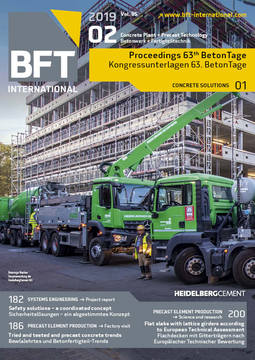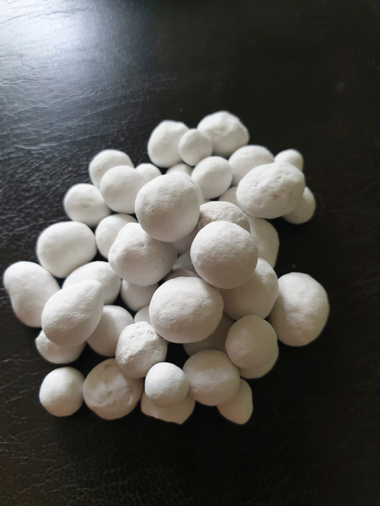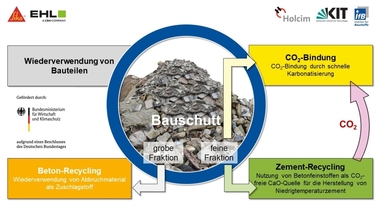Recycled crushed sand
At present, DIN EN 197-1 does not define recycled fine aggregates (crushed sands) as main constituent of cement. Cements with ground crushed sand as main constituent are subject to an approval. Apart from technical verifications of the properties in accordance with DIN EN 196-1 and/or DIN EN 197-1 and durability tests carried out on concrete, crushed sands also have to comply with the parameters of eluate and solid matters relevant to the environment.
The investigations within the “R concrete” research project (//www.r-beton.de" target="_blank" >www.r-beton.de:www.r-beton.de) aimed at the development of guidelines on the use of crushed sands for the production of cement (called “R cement” in the context of the project). The majority of R cements was manufactured in the laboratory by mixing of 90 and/or 70 wt.-% of CEM I 42.5 R and 52.5 R, respectively, by 10 and/or 30 wt.-% of ground crushed sand. In large-scale plant tests, R cement was manufactured by combined grinding of clinker, crushed sand, and sulphate agent. The crushed sand used originated from crushed concrete, recycled brick and roof tile material, track ballast and railroad sleepers. The R cements corresponded to the strength classes of 42.5 N up to 52.5 R. The assessment criteria regarding the durability of the concretes being relevant for approval were met by using the cements containing up to 10 wt.-% of crushed sand. In addition, the crushed sands complied with the requirements in terms of environmental analysis according to DIN 4226-101.
When considering all results obtained with R cement within the project as a whole, it can be determined that these cements containing up to 30 % of crushed sand at least could be used for concrete of interior components. However, a continuous, consistent material flow of the corresponding quality between processing industry and cement plant would be a precondition.





